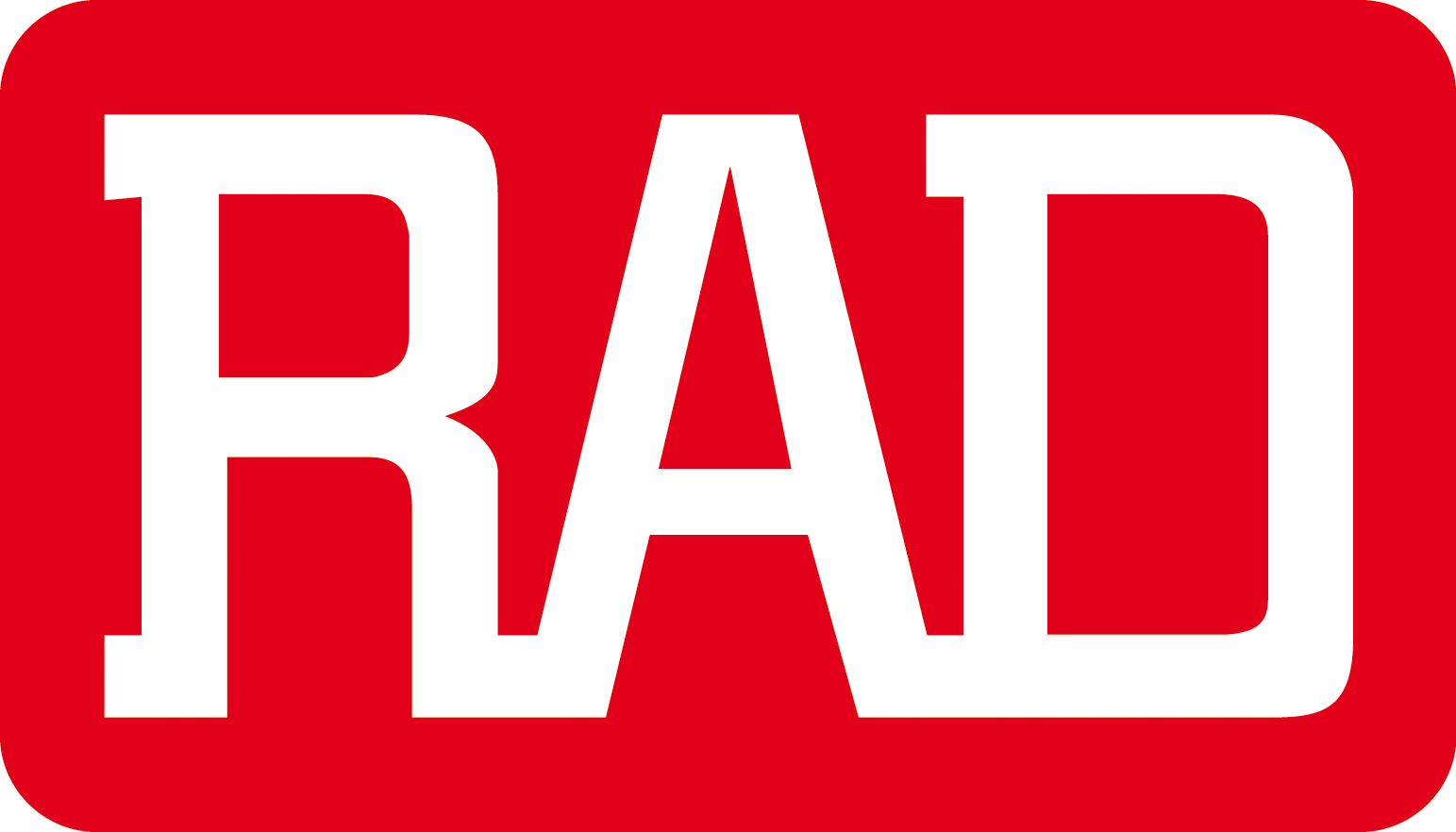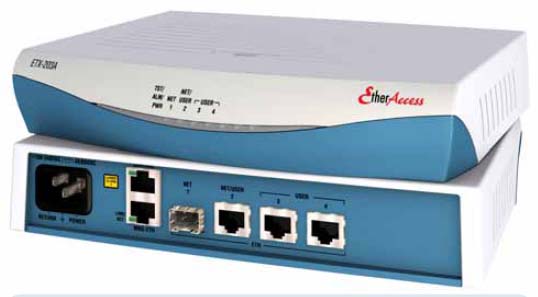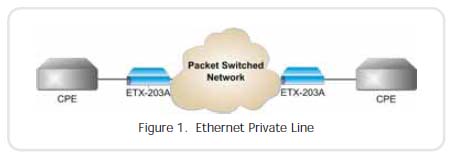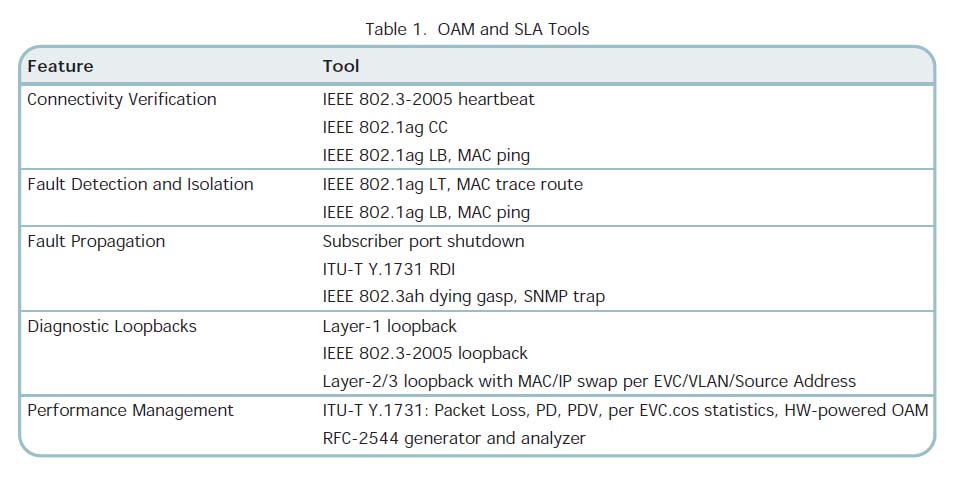




ETX-203A Carrier Ethernet Demarcation Device from RAD
The ETX-203A Carrier Ethernet demarcation device delivers SLA-based business services to the customer
premises over native Ethernet access networks.
replaced by ETX-203AX

ETX-203A is extremely price competitive, ensuring SDH/SONET-like performance and
Five Nines reliability for IP VPN and VoIP transport, as well as for dedicated Internet access and Layer-2 LAN-to-LAN
services, all with differentiated quality of service and end-to-end monitoring.
The RAD ETX-203A architecture ensures powerful traffic management that allows the service provider to control bandwidth
and enforce traffic SLA.
ETX-203A features hardware-powered OAM for multiple flow monitoring at line rate. It provides 15 different SLA tools
(see Table 1) to assure and control the traffic by the service provider around the
clock.
ETX-203A is a compact low power consumption demarcation device that delivers MEF 9 and MEF 14 certified
services. It provides Ethernet uplink NNI ports as well as UNI ports.
ETX-203A FLEXIBLE TRAFFIC MAPPING
Traffic is mapped to the Ethernet flows using very flexible classification criteria
that can be combined, for example:
- VLAN + VLAN priority
- VLAN + IP precedence
- VLAN + DSCP
- Ether Type
- IP/MAC source/destination address
- Untagged.
More classification criteria and combinations can be found in the user manual.
HIERARCHICAL SCHEDULING AND SHAPING PER FLOW WITH ETX-203A
Every flow has its own queues and scheduler. ETX-203A supports up to 192 flows, and up to 30 queue blocks per
network port. Each queue block is a group of eight queues per class of service.
QOS IMPLEMENTED BY ETX-203A
Different service types require different levels of QoS to be provided end-to-end.
QoS can be defined per subscriber as well
as per service. QoS has three aspects: rate limitation, traffic shaping, and traffic
prioritization.
Traffic policing is applied per flow or group of flows, and operates according to the
dual token bucket mechanism based on
user-configurable CIR + CBS and EIR + EBS. Traffic can be limited to the line rate or
the data rate.
For prioritizing user traffic, RAD's ETX-203A maps user traffic to up to eight separate
queues per service. Each can be configured as strict priority queues or weighted fair queues (WFQ).
The queues handle traffic with different service demands, such as real-time traffic,
premium data, or best-effort data.
The RAD ETX-203A uses the WRED policy to ensure that in case of congestion, high-priority packets are not dropped
(low-priority packets may be dropped).
TYPICAL APPLICATIONS FOR THE RAD ETX-203A
ETX-203A is used in the following
MEF-defined applications:
- Ethernet Private Line (EPL) – site-to-site connectivity over dedicated
bandwidth without service multiplexing (see Figure 1)
- Ethernet Virtual Private Line (EVPL) – site-to-site connectivity over shared
bandwidth with service multiplexing (see Figure 2)
- Ethernet LAN – site-to-site connectivity over dedicated bandwidth with or without service multiplexing.
ETHERNET OAM
Featuring ultra fast, hardware-powered processing, ETX-203A performs OAM and PM measurements in line rate with
maximum precision, offering the following powerful benefits:
- Immediate detection of loss of continuity (LOC), ensuring under 50 ms protection switching
- Highly accurate frame loss measurements with live traffic testing
- Flow-level monitoring, enabling simultaneous processing of hundreds of OAM sessions
- Loopback testing at line rate.
ETX-203A provides these types of Ethernet OAM:
- Single-segment (link) OAM according to IEEE 802.3-2005 (formerly 802.3ah) for remote management and fault
indication in active and passive mode, including remote loopback, dying gasp, and MIB parameter retrieval.
- End-to-end connectivity OAM based on IEEE 802.1ag-D8 that enables Ethernet
service providers to monitor their services proactively and guarantee that customers receive the contracted SLA
- End-to-end service and performance monitoring based on ITU-T Y.1731. Fault monitoring and end-to-end
performance measurement include frame delay, frame delay variation, frame loss and availability.

NETWORK INTERFACE RESILIENCY WITH RAD ETX-203A
Flow-based resiliency on uplinks is provided, as well as G.8031 – Ethernet linear protection on the network ports.
ETX-203A implements EPS Ethernet Path protection according to ITU-T G.8031.
The RAD ETX-203A protects one or multiple EVCs in the network via standard APS messages
and via OAM ETH AIS/LOC criteria, ensuring protection switching under 50 msec. The
protected EVC runs over one uplink or dual uplinks per customer requirement. Protection is available for the following
topologies:
- End-to-end EPS path protection for one or multiple EVCs transported over
MPLS/VPLS access network
- Opposite standard PE supporting G.8031 EPS.
Additionally, the following protection methods are provided via port-based resiliency on the network ports:
- Link aggregation (LAG) based on 802.3ad
- Dual homing (1:1), allowing ETX-203A to be connected to two different upstream devices.

COLOR-AWARE P-BIT RE-MARKING
The VLAN priority bit in Ethernet frames can be modified at network ingress according to the ‘color’ of the frame. This
allows service consistency and QoS continuity across color-aware (Drop
Eligible-enabled) as well as color-unaware
networks.
FAULT PROPAGATION
The RAD ETX-203A provides a user-configurable fault propagation mechanism in the
network-to-user or user-to-network direction. When a link failure is detected or OAM failure received, ETX-203A can
shut down the affected port or forward the OAM failure message. The fault
propagation mechanism enables routers and switches connected to both ends of the link to reroute the traffic to the
redundancy path.
INTEGRATED SMART SFP SUPPORT OF THE ETX-203A
Integrated management of MiRICi smart SFPs provides TDM (E1/T1/E3/T3/ OC-3/STM-1) connectivity over PDH or
SDH legacy networks. ETX-203A supports configuration and statistic collection for
the smart SFP TDM port.
RFC-2544
The RAD ETX-203A provides a built-in RFC-2544 wirespeed traffic generator and analyzer
for unidirectional and bidirectional testing
of throughput, latency, and frame loss. The tests are done over any Layer-2,based on standard OAM messages, and
can be performed for multiple flows.
LAYER-2/ LAYER-3 LOOPBACK WITH MAC AND IP ADDRESS SWAPPING
As services and networks become more complex, tracking service and network faults is very important for conforming to
the SLA. Therefore it is vital that the service provider can perform network loopbacks to easily track failures. Layer-2
and/or layer-3 network integrity can be tested by a non-disruptive loopbackperformed per flow, with swapping of
MAC address and optionally IP address. When the loopback is activated, ETX-203A exchanges the source and destination
MAC/IP addresses of the incoming packets. This loopback passes through Ethernet bridges (MAC address) and
routers (IP address).
MANAGEMENT OF THE RAD ETX-203A
The unit can be managed using the following ports and applications:
- Local management via an ASCII terminal connected to the RS-232 port
- Remote inband management via user or network ports routed via separate VLANs, Telnet, or a third-party OSS
system
- Out-of-band management via a dedicated management port
- SFTP – Secure File Transfer Protocol.
TRAP SYNCHRONIZATION
Traps are sent with sequence IDs to network manager groups, to enable the managers to detect when traps are lost
and request the traps be sent again.
ETX-203A SECURITY
The following security protocols are provided by ETX-203A to ensure client server communication privacy and correct
user authentication:
- SNMPv3
- RADIUS (client authentication)
- TACACS+
- SSH for Secure Shell communication session.
L2CP HANDLING
ETX-203A can be configured to pass through Layer-2 control frames (including other vendors’ L2CP frames) across the
network, to peer supported protocols (IEEE 802.3-2005 and LACP), or to discard the L2CP frames.
DYING GASP
ETX-203A reports power failures to defined network management stations by sending an IEEE 802.3-2005 message and
trap, thus enabling the unit to properly disconnect from the network with notification of the reason for the service
problem.
UNIVERSAL POWER SUPPLY
The ETX-203A power supply inlet can be connected to AC or DC power.
DHCP
IP address, IP mask, and default gateway can be automatically obtained using DHCP.
COMMAND LINE INTERFACE
Databases and scripts of commonly used commands can be easily created and applied to multiple units using command
line interface.

Popular models include:
ETX-203A/2SFP/2UTP
ETX-203A/GE/1SFP1UTP/2UTP
ETX-203A/GE/2SFP/2UTP
ETX-203A/GE30/1SFP1UTP/2UTP
ETX-203A/GE30/2SFP/2UTP
ETX-203A product data sheet (pdf)